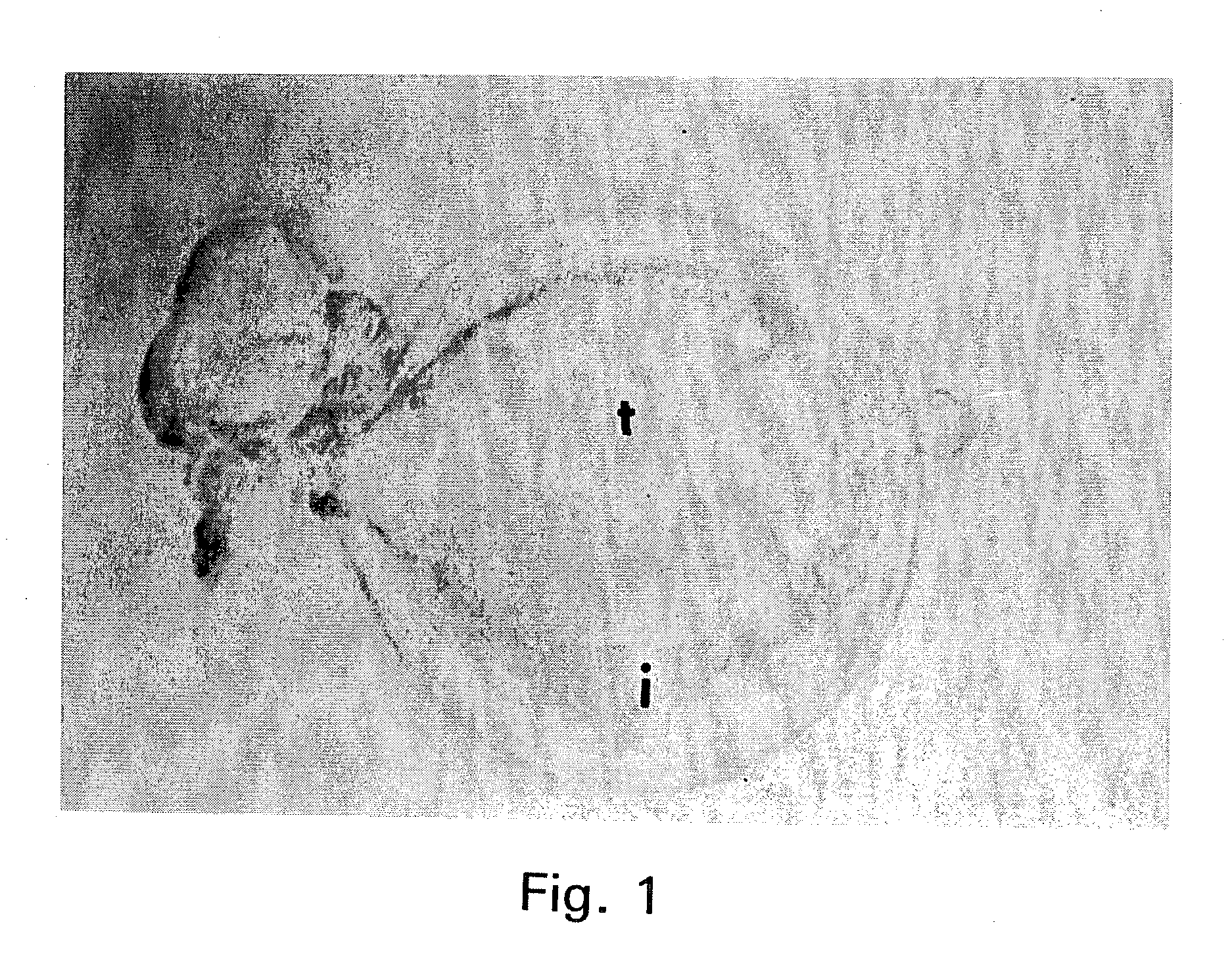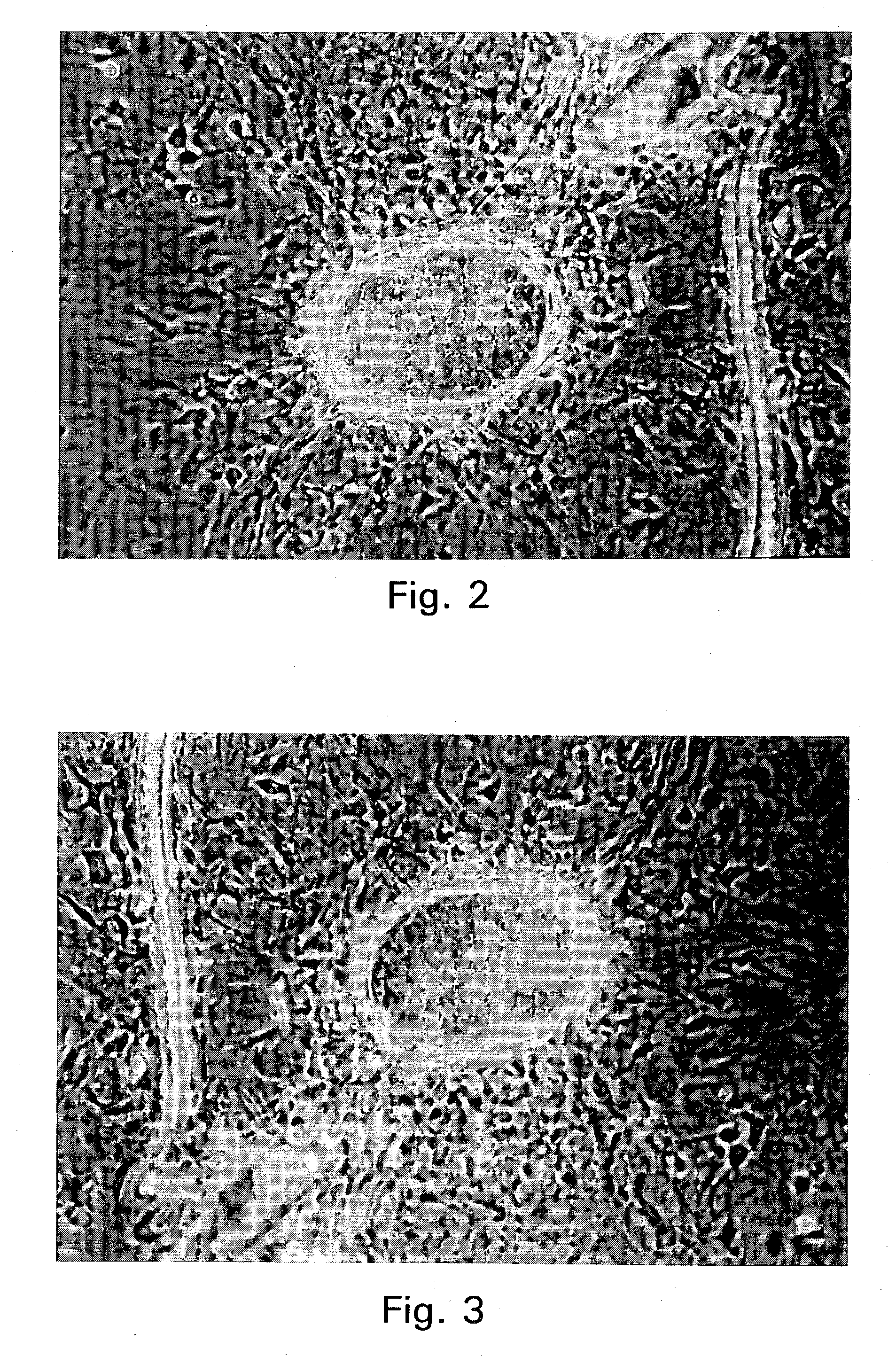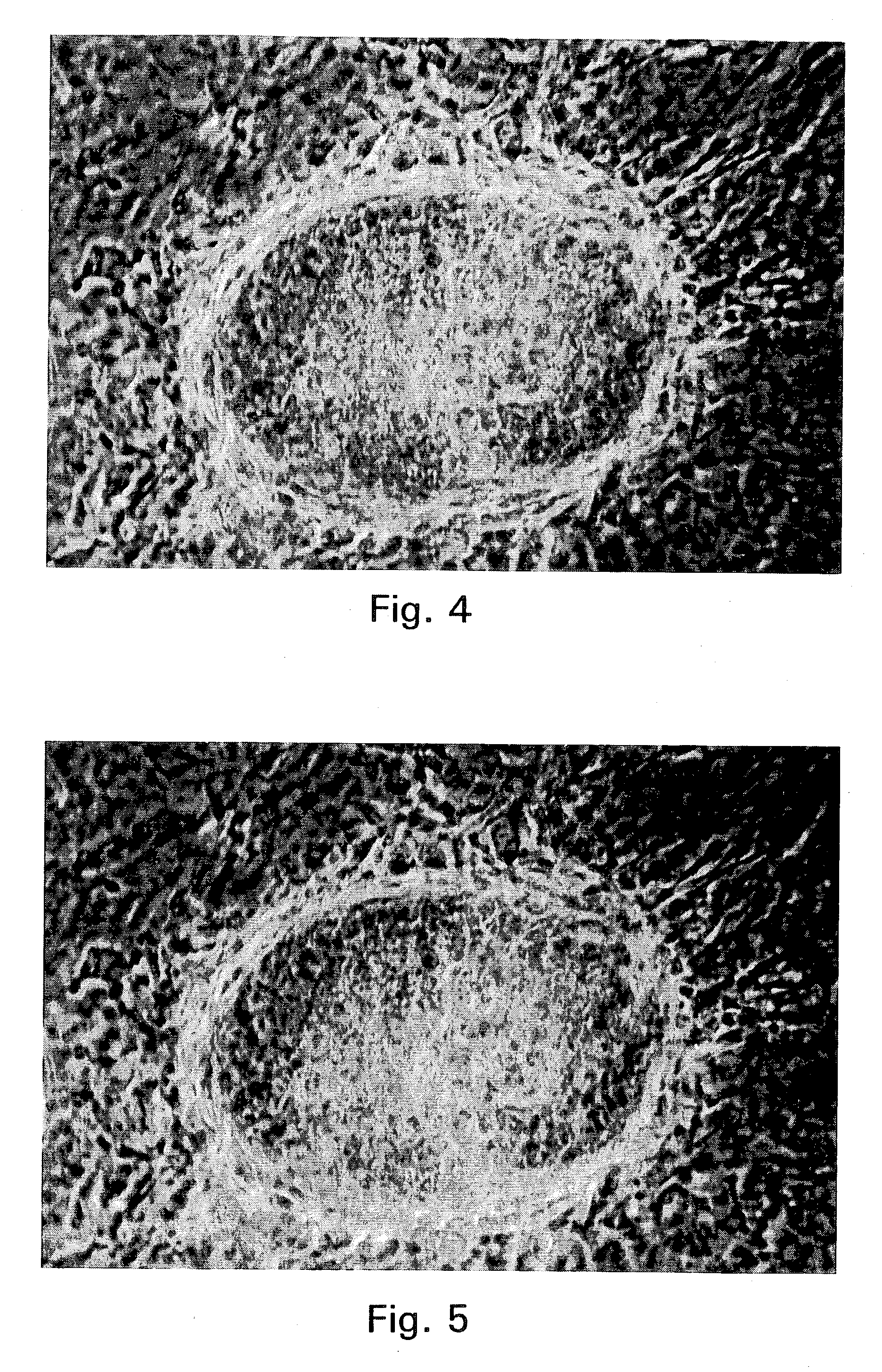Embryonic or stem-like cell lines produced by cross species nuclear transplantation and methods for enhancing embryonic development by genetic alteration of donor cells or by tissue culture conditions
a technology nuclear transplants, applied in the field of embryonic stem cells, can solve the problems of high controversy over the acquisition of cells or tissues from aborted fetuses, limited supply of human fetal cells or tissue obtained from miscarriages, and no available procedure for producing "fetal-like" cells from patients
- Summary
- Abstract
- Description
- Claims
- Application Information
AI Technical Summary
Benefits of technology
Problems solved by technology
Method used
Image
Examples
example 2
[0213] A. Mitochondria Isolation Protocol from a Cell
[0214] This Example relates to isolation of mitochondria and use thereof to enhance the efficiency of cross-species nuclear transfer. The number of mitochondria per cell varies from cell line to cell line. For example, mouse L cells contain .about.100 mitochondria per cell, whereas there are at least twice that number in HeLa cells. The cells are swollen in a hypotonic buffer and ruptured with a few strokes in a Dounce homogenizer using a tight-fitting pestle, and the mitochondria are isolated by differential centrifugation.
[0215] The solutions, tubes, and homogenizer should be pre-chilled on ice. All centrifugation steps are at 40.quadrature.C. This protocol is based on starting with a washed cell pellet of 1-2 ml. The cell pellet is resuspended in 11 ml of ice-cold RSB and transferred to a 16 ml Dounce homogenizer.
[0216] RSB Buffer
[0217] RSB (A hypotonic buffer for swelling the tissue culture cells)
[0218] 10 mM NaCl
[0219] 1.5 mM...
example 3
[0252] Another method for improving the efficacy of the cross-species nuclear transfer comprises the fusion of one or more enucleated somatic cells, typically human (of the same species as donor cell or nucleus), with any of the following:
[0253] (i) non-activated, non-enucleated (e.g., bovine) oocyte;
[0254] (ii) non-activated, enucleated (e.g., bovine) oocyte;
[0255] (iii) activated, enucleated (e.g., bovine) oocyte;
[0256] (iv) non-activated, fused (with human cell) oocyte (typically bovine);
[0257] (v) activated, fused and cleaved reconstructed (e.g., cow oocyte / human cell) embryo;
[0258] (vi) activated, fused one cell reconstructed (cow oocyte / human cell) embryo; or
[0259] (vii) non-activated, fused (e.g., with human cell) oocyte (typically bovine oocyte).
[0260] Fusion is preferably effected by electrical pulse or by use of Sendai virus. Methods for producing enucleated cells (e.g., human cells) are known in the art. A preferred protocol is set forth below.
[0261] Enucleation Procedure...
example 4
[0269] Protocol for the Derivation of Human Stem Cells using Cross Species Nuclear Transfer with Rabbit Eggs and Human Somatic Cells
[0270] Superovulation:
[0271] 1--Super ovulate New Zealand does age 8-12 months using consecutive injections of FSH, the first two 0.3 mgr and the last four, 0.4 mgr twelve hours apart.
[0272] 2--12 hrs after the last FSH injection, a single i.v. injection of 100 IU of hCG is given.
[0273] Oocyte Collection:
[0274] 1--12 to 24 hrs after hCG injection, flush oviducts using warm (37.degree. C.) DPBS+1% bovine serum albumin (BSA) or HTF with 1% human serum albumin (HTF-HSA). 2--Search eggs in a dissecting microscope and placed in transport media--DPBS+1% bovine serum albumin (BSA) or HTF with 1% BSA (HTF-BSA). 3--Transport to the laboratory at 38.50.degree. C.
[0275] Egg Stripping:
[0276] 1--Pick up oocytes with a pipette and place in .about.1 ml of hyaluronidase (1 mgr in HTF-BSA) solution in a 15 ml conical tube.
[0277] 2--Vortex for 5 minutes at a setting of 6...
PUM
| Property | Measurement | Unit |
|---|---|---|
| Efficiency | aaaaa | aaaaa |
| Fluorescence | aaaaa | aaaaa |
Abstract
Description
Claims
Application Information
 Login to View More
Login to View More - R&D
- Intellectual Property
- Life Sciences
- Materials
- Tech Scout
- Unparalleled Data Quality
- Higher Quality Content
- 60% Fewer Hallucinations
Browse by: Latest US Patents, China's latest patents, Technical Efficacy Thesaurus, Application Domain, Technology Topic, Popular Technical Reports.
© 2025 PatSnap. All rights reserved.Legal|Privacy policy|Modern Slavery Act Transparency Statement|Sitemap|About US| Contact US: help@patsnap.com



